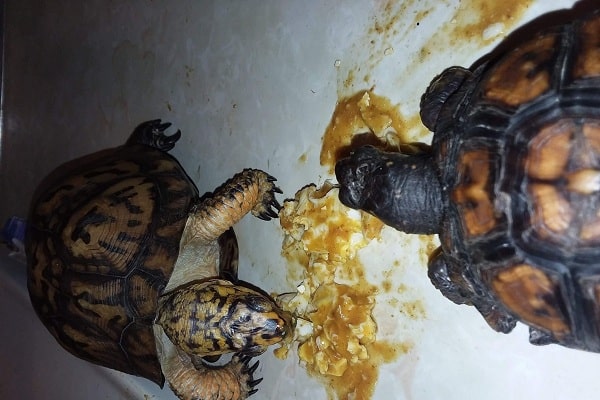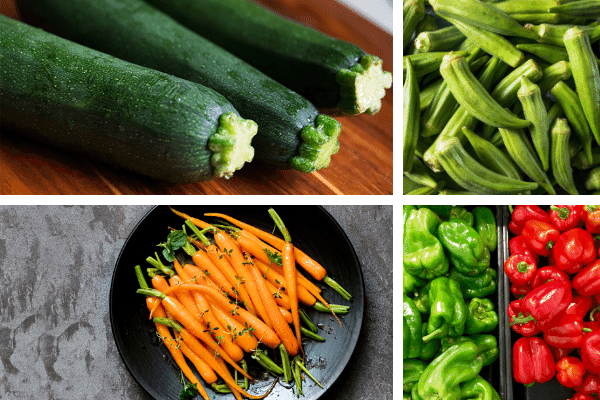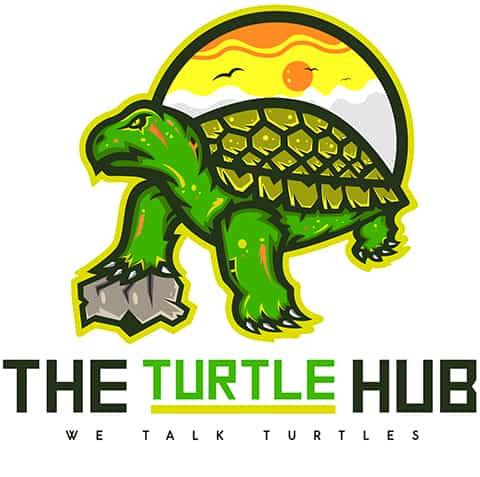Tags:
Box Turtle Food, Diet & Feeding Guide [DOs and DONTs]


fact checked & review by
Dr. Partho Kumar Shaha
Veterinarian (DVM)
The information is current and up-to-date in accordance with the latest veterinarian research.
Diet is an important part of raising a box turtle. Many turtle owners or keepers do not have a proper idea on a box turtle’s diet, and for this reason, they suffer a lot.
Box turtle is an omnivorous reptile. But it does not give you the freedom to force any food on your pet box turtle. Each box turtle has a certain appetite, and also the food choice of a box turtle depends on many factors.
I have been keeping box turtles for a long time. So I have done some research on the box turtle’s diet and food habit. In this article, I will discuss everything related to the box turtle’s diet.
Are Box Turtles Omnivorous?
Box turtles are considered omnivorous. Omnivorous means they can eat both plants and meat. But each species and subspecies have different preferences for food.
Some species and subspecies of box turtle prefer insects, while many tend to eat both insects and plants. Box turtles have sharp eyes, and they can smell insects. So they can easily prey insects to eat.
The food preference does not only depend on subspecies but also depends on the box turtle’s age. At a young age, up to 4 or 6 years, box turtle’s act like carnivorous. It means baby turtles prefer meat type food.
On the other hand, adult box turtles are considered herbivorous. It means they prefer plants more. Whatever the age or subspecies is, science says a proper diet for box turtle should contain 50% plant-based element and 50% animal-based element.
“Box turtles are omnivorous, which means that they eat both plant and animal-based foods.”
What Should You Feed To Your Box Turtle?
We have learned that a box turtle’s diet should contain 50% plant-based elements and 50% animal-based elements. Both of these elements are equally important for a box turtle’s diet. Like other animals or reptiles, box turtles also need Vitamin and minerals to live a healthy life. So any turtle owner must ensure that their turtles are getting a balanced diet.
I will talk about a balanced diet later. First, I will discuss what foods a box turtle can eat. We know that box turtles are omnivorous animals. It prefers fruits, vegetables, insects, meat, and fungi as food.
Vegetables To Feed To A Box Turtle

You can offer a wide combination of vegetables to your box turtle. Box turtles can eat almost any vegetables. But you have to choose the best ones for the box turtle’s health.
Here is a list of vegetables you can add to its diet chart.
- Squash (Any kind of squash will work. In summer, box turtles can eat row squash, but in winter, you need to shred and steam the squash. The box turtles can eat shredded and steamed squash easily.)
- Acorn
- Butternut
- Yellow pumpkin
- Zucchini
- Bell peppers
- Carrots (You have to shred them first)
- Green beans
- Okra
- Cactus pad and fruit (You have to get rid of all the spines)
- Sweet potatoes ( You have to cook and shred, or grate first and then microwave quickly)
- Potatoes
- Corn
- Tomatoes
- Broccoli
- Cauliflower
- Beets
- Cucumber
- Romaine lettuce (It is not very nutritionally dense and can cause diarrhea. And so you have to limit the amount)
- Chinese and green cabbage
Green leafy vegetables are very beneficial for the box turtles. Some vegetables carry more nutrition than other vegetables. Among all types of lettuce, Romaine lettuce is the best. But I have already mentioned that too much Romaine lettuce can harm the box turtle’s health.
Bibb, escarole, and red leaf lettuces are also a good source of vitamins and minerals. Iceberg lettuce does not contain much nutrition so you should better avoid it.
Here are some green leafy vegetables, which are best for your box turtle.
- Collard greens
- Mustard greens
- Parsley
- Endive or escarole
- Dandelion greens
- Beet tops
- Spinach
- Kale
- Turnip
- Watercress
- Clover
Fruits To Feed A Box Turtle

Box turtles are very fond of sweet fruits. Especially they love berries. Like humans, box turtles have their own favorite fruits. You should definitely explore the favorite fruit of your box turtle.
Here is a list of fruits you can provide to your box turtle.
- strawberries
- Raspberries
- Cranberries
- Blackberries
- Apples
- Apricots
- Bananas
- Figs
- Grapes
- Kiwis
- Melons
- Peaches
- Plums
- Papaya
- Cherries
- Watermelon
“Fruits may be eaten preferentially, are generally mineral poor and should perhaps be used sparingly as a top dressing.”
VCAHospitals
Like I have said, box turtles love fruits. But it does not mean you will provide only fruits to it. You can mix it up with other vegetables and protein. In this way, the food will contain much nutrition and minerals.
Fungi To Feed To Your Box Turtle

Box turtles can eat any kind of mushroom. Chanterelles to Morels, and Puffballs, a box turtle is okay with each kind of mushroom. You do not need to add mushroom to the diet chart of the box turtle. You can share your mushroom with your box turtle while eating.
You can buy common mushrooms from a local store and feed your box turtle once in a while.
How to choose vegetables and fruits for a box turtle?
Box turtles can eat all most all types of vegetables and fruits. But you should not feed any kind to your box turtle. While choosing vegetables and food for your box turtle, you should follow the instructions given below.
- The fruits and vegetables must be clean.
- The items must be free from any kind of pesticides and chemicals.
- The diet should contain proper calcium and phosphorous balance. You can aim for a 1:5:1 ratio of calcium to phosphorous, but a 2:1 ratio is much better.
Insects to feed to the box turtle

Most of the box turtles love insects. Fresh and natural prey items of insects are the best for a box turtle. Insects are available in all turtle shops. You can also catch insects yourself.
If you catch the insects by yourself, make sure the insect is not poisonous and is not exposed to any pesticides.
Here is a list of insects you can feed to your box turtle.
- Crickets
- Earthworms
- Grasshoppers
- Beetles
- Caterpillars
- Mealworms
- Waxworms
- Super worms
- Red worms
- Snails
- Slugs
A box turtle can eat animal-based foods too. For example,
- Minnows
- Small chunks of cooked meats (Row meats contain bacteria. So you should avoid it.)
- Moistened, high quality and low-fat dog food
Which Foods To Avoid In Your Box Turtle’s Diet Plan?

Box turtles can endure many things. There is a saying that a box turtle can eat a poisonous mushroom without falling ill. Despite knowing this, you should not provide some foods to your box turtle. It is because we do not know how much a box turtle can tolerate before falling sick.
Here is a list of foods that you should never feed your box turtle.
- The leaves of rhubarb
- Potato plant
- Tobacco plants
- Avocado peel
- Avocado seeds
- Leaves of avocado
- Tomato leaves
- Tomato vines
- Poison ivy
- Poisonous plants or leaves
If you do not know which plants are poisonous, you can check California Turtle & Tortoise Club. This site has updated this list, which can help you a lot not only while avoiding plants for box turtle’s diet but also for planting those trees in its habitat.
There are some more products we should not feed our box turtles.
- Dairy products: Box turtles can not eat dairy products. Reptiles are lactose intolerant. So you should avoid milk, cheese, yogurt, and other dairy products for box turtles. Providing these to your box turtle could create critical medical conditions.
- Preserved or processed food: Lunchmeat, sausage, and canned foods are some of the processed food. You should avoid any kind of processed, preserved, or high salt food in your box turtle’s diet chart. These foods are not good for humans either, but we have a choice to eat it or not. Box turtles rely on us, and so we should not feed them this type of food.
- Candy: Candy, chocolates, or any food with high refined sugar is harmful to the box turtle. As these foods are edible and sweet, the box turtle will enjoy eating these. But there do not contain any minerals.
- Junk food: Box turtle can really enjoy having a cheeseburger or beacon. But remember, these are not good for the box turtle.
As you can see, the list of the food your box turtle should avoid is little. So is it too hard to maintain?
Box Turtle And Junk Food
Though box turtle is omnivorous, you can not feed it literally anything. Like humans and other animals, some foods cause harm to a box turtle. Junk food is such an item that is not good for both humans and box turtles.
It sounds funny, but some turtle owners feed their box turtles whatever seems convenient to them. Providing junk foods like beacons, hamburgers, or eggs can cause severe harm to your box turtles.
Even if your box turtle enjoys junk food, it does not approve of the food’s nutrition. If your box turtle starts enjoying junk foods, then it will become its bad habit to crave junk foods.
How much to feed a box turtle
The amount of food plays a significant role in a box turtle’s growth and health. The amount of food the box turtle needs depends on two factors.
- Age
- Size
To determine the amount of food it needs, you can use two methods.
- The 15 minutes method
- The size of the head method
The 15 Minutes Method
It is a simple method. All you have to do is to provide a lot of food to the box turtle and let it for 15 minutes. After that, remove the food.
This method has flaws because a box turtle has wild instincts. It means when they are given food, they try to eat as much as they can in the shortest time. Because of their wild instinct, they assume, they would not get food again. This mentality would not change no matter how often you feed it.
Many people still recommend this method, but personally, I would not suggest you follow so. You can end up overfeeding your box turtle by following this method. And that can cause health issues.
The Size Of The Head Method
This method is neither simple nor complicated. This method instructs to feed the box turtle the amount of food is needed to fill its head if it were hollow.
Sounds complicated? Let me explain a little more. Take a small container or cup, which is almost the size of the box turtle’s head. Fill the container or the cup with food to the top, and feed it to the box turtle.
You can also make assumptions, and in that case, you would not need a container. It is okay if the food is a little much or less because a small amount does not affect the box turtle.
This method is better than the 15 minutes method. I always suggest this method to feed my box turtles.
How Often Should You Feed Your Box Turtle?
It is essential to know how often you should feed your box turtle. Many types of researches have been done on this particular topic because it is a must thing to know. The time of feeding your box turtle is somehow related to how much it can eat.
The amount of food indicates how often it should be fed. Sometimes you would need to feed it once every day, or once per two days, or even once per three days. But it is suggested to not go on the fourth day.
For feeding a box turtle, you can make a schedule. And for making one, you must consider the age of the turtle. The baby turtles need different quantities of food than the young ones, and the young ones need different quantities of food than adult box turtles.
Schedule For The Baby Box Turtles
Among all the groups, baby box turtles need more food. We know that a box turtle grows the best at their tender age. So they need a lot more energy than the other age groups. The energy for growth comes from food.
So a baby box turtle should be fed every day. You can use the size of the head method for it. 15 minutes method is not proper for this group, as it can result in overfeeding.
Schedule For Young Box Turtles
As baby box turtles step into the nest stage, the need for food changes. A baby box turtle is considered as a juvenile or young when it grows 4 to 6 inches. It happens within 8 to 12 months.
A juvenile or young box turtle does not grow as fast as the baby box turtles. They have a slow growth rate, but it is much faster than the adult ones. You can adapt two options while making a diet schedule for a young box turtle.
- You can feed the young box turtles once every two days. For that, you can use the head method.
- You can half the amount of food the box turtle needs, and feed it every day.
The time will have no negative effect on them as long as the amount of food is accurate. So you can choose any method according to your comfort.
Schedule For Adult Box Turtles
The adult box turtle’s growth rate is very slow. After reaching a certain age or stage, the box turtle will not grow at all. So, the adult box turtles do not need as much food as the other two groups.
The best way to feed your adult box turtle is once every three days. You can use the head method for this. The amount of food may seem little if you compare it with the other two groups. But the truth is, the amount is just perfect for the adult box turtle.
You can occasionally feed other things to your box turtle. But make sure the food is not bad and do not make it a habit.
It is really important to follow the feeding schedule. Do not worry if you miss any date because a box turtle can live over a week without any food. You can set a reminder on your phone so that you do not miss any schedule of feeding.
Foods a must for a box turtle must have
A box turtle needs calcium for its proper growth and healthy life. So you have to ensure that your box turtle is getting enough calcium from the foods. Again, calcium can not always get absorbed. It needs some factors to work effectively.
You have to make sure all these factors in a box turtle’s diet. Cuttlebones are a great source of calcium. No matter you are raising your box turtle in an indoor or an outdoor habitat, you can provide cuttlebones to it.
Just put some cuttlebones inside the enclosure, and the box turtle would eat by itself. I recommend providing natural cuttlebones to the box turtle. You can find natural cuttlebones in any local shops or on the online pet shops.
The Ideal Diet For The Box Turtle
A box turtle needs specific minerals and vitamins from food to have a healthy life. You can ensure a balanced diet to the box turtle by combining different types of food items. You can use the food list I have discussed above.
You have to choose food items from each group. You can increase the amount of food of any items according to the box turtle’s need. A scientific research says the balanced diet for a box turtle should contain 50% proteins, 30% vegetables, 10% green leafy vegetables, and 10% fruits.
I have illustrated the details below.
Protein

It has been stated that the diet of a box turtle should contain 50% of protein. You can cut the protein into small pieces and mix it with vegetables and fruits.
You have to sprinkle the meat with calcium supplements. But make sure that the supplements do not contain phosphorous.
Protein Chart
| Regularly | Occasionally | Less Frequently | Never |
|---|---|---|---|
| Natural and Live Pesticide-free earthworms | Low-fat soaked dog kibble | Pink mice | Raw meats |
| Slugs | Soaked puppy milk bones | Boiled Egg | Fat meats |
| Waxworms | low-fat premium dog food (canned) | Tofu | processed meats |
| Beetles | Cooked steaks (lean cuts) | low-fat cat kibble | |
| Grubs | Mealworms | ||
| Sowbugs | Commercial box turtle foods | ||
| Boiled Chicken | |||
| Chopped Chicken | |||
| Feeder Fish Heart | |||
| Feeder Beef Heart |
Vegetables

A proper diet of a box turtle should contain almost 30% of vegetables. A variety of vegetables can be fed to a box turtle. Make sure the vegetables you are using are fresh and pesticide or chemical-free. You can steam or shred the vegetables before giving it to the box turtles.
Vegetable Chart
| Regularly | Occasionally | Less Frequently | Never |
|---|---|---|---|
| summer and winter squashes | all types of mushrooms | bean sprouts | Avocado peel |
| peas in the pod | corn on the cob | brocolli | |
| Sweet potatoes | tomatoes | cabbage | |
| Okra | beets | ||
| Carrots | cauliflower | ||
| Green Beans | |||
| Wax Beans | |||
| Cactus Pads with Spines removed |
Leafy Green Vegetables
Leafy green vegetables contain a rich amount of minerals and vitamins. It helps the box turtle to stay healthy. A diet should contain 10% of the leafy green vegetables.
Leafy Green Vegetable Chart
| Regularly | Occasionally | Less Frequently | Never |
|---|---|---|---|
| Collard greens | red leaf lettuce | iceberg lettuce | Rhubarb |
| mustard greens | endive | spinach | potato leaves |
| Dandelion greens | parsley | tobacco leaves | |
| Romaine | kale chard | ||
| Wheat Grass | swiss chard | ||
| Turnip Greens |
Fruits
Fruits contain many vitamins and minerals. A diet of box turtle should have at least 10% of fruits. Each box turtle loves eating fruits, and each of them has a favorite fruit.
If your box turtle does not each much, you can use fruits to entice it. Cut the fruits in small pieces, and mix it up with other foods. You have to sprinkle some vitamins on the fruits to enrich its value.
You can give any fruit to the box turtle from the chart I have discussed earlier.
Food Pyramid Of A Box Turtle
A box turtle food pyramid is a simple guide for the turtle owners. The bottom foods are most important for the box turtles, and each group is significant for a box turtle’s good health.

Are Vitamins And Minerals Important In A Box Turtle’s Diet?
If you want a healthy box turtle, you have to make sure that the box turtle is getting enough vitamins and minerals. A box turtle can suffer from many diseases if there is any lack of vitamin or minerals in its diet.
I have said earlier that to ensure a box turtle’s good health, you have to provide sufficient calcium and calcium absorber. Without proper vitamins, the box turtle can suffer from Vitamin deficiency or bone diseases.
I have illustrated the importance of different vitamins and minerals below.
Calcium
Calcium is a mineral, which can be obtained from certain food or supplements. The calcium is absorbed by blood through the intestine of the box turtle. The calcium stays dissolved for a long time. A box turtle’s system uses the calcium for organ systems and bone developments.
Turtle’s boxy needs a proper level of phosphorous and vitamin D3 to absorb the calcium. If the turtle does not get sufficient calcium, it will take calcium from its bone. It will cause metabolic bone disease to the box turtle.
“Turtles have a higher need for dietary calcium than phosphorus.”
Phosphorous
Phosphorous is a mineral and it is easy to find in any food. It is not good for the box turtle. So it should be best for you to avoid the supplements that contain high phosphorous.
Vitamin D3
Vitamin D3 is a significant element for the box turtle. It can be produced by the pigment cells in the skin. When the skin is exposed to the sunlight or UVB light source, Vitamin D3 gets produced.
Vitamin D3 is important for absorbing calcium. So you should buy the supplements that contain vitamin D3.
Vitamin A
Any turtle owner should ensure Vitamin A for the box turtle’s good health and vision. Without a sufficient amount of vitamin A, the box turtle may suffer from bone, eye and skin diseases.
Green leafy vegetables or yellow vegetables are great sources of vitamin A. You have to provide vegetables to the box turtle’s diet on each diet.
Water Requirements For A Box Turtle
Box turtles do not drink water from the bowl directly. It drinks water while bathing or soaking. The water has to be fresh.
You can provide a dish of water for the box turtles to drink and soak. You must change the water regularly and each time you should provide fresh drinking water. A box turtle can survive a long time without water. But that may cause some health issues.
Are Commercial Or Prepared Foods Good For The Box Turtle?
Many commercial foods for box turtles are available in the market right now. Different manufacturer companies are trying to provide the best diet food the box turtles.
From my point of view, a box turtle does not need commercial or prepared food as long as you are providing a natural balanced diet. But if you are too much concerned, you can provide commercial foods to the box turtle. Prepared foods have an accurate amount of vitamins and minerals for the box turtle.
Box turtle’s prepared foods come in a can and they are dry. Box turtles do not prefer dry foods. So you can wet the food a little before giving it to the box turtle.
Dog Food And Box Turtle
Many websites and books refer that dog foods can be beneficial for a box turtle. Do not wonder. It is partially true.
Dog food contains high protein. So it can fulfill the need of protein of the box turtle. Obviously, it is not a great idea but not a worse idea too. As box turtles are omnivorous, it will eat the dog food.
If you seek my suggestion, I will tell you to avoid dog food for the box turtle and provide it another source of protein. In case you want to feed your box turtle dog food, you should buy the one with low fat and protein.
Dog foods contain much protein and fat that is harmful to the box turtle. And also buy wet dog foods, as the box turtle can not eat dry food.
Diet Change For A Box Turtle
Like humans, box turtle can get bored by eating the same food every day. Your box turtle can go on a hunger strike if you provide the same food every day.
I would suggest you mix up the diet combination regularly. It will increase the box turtle’s appetite and will ensure its good health.
What Does A Box Turtle Eat In The Wild?
A wild box turtle does not have the advantage of having a properly balanced diet. It has to fight with the wilderness to get its meal. Here is a list of food the box turtles eat in the wild.
- Snails
- Spiders
- Earthworms
- Caterpillars
- Grasshoppers
- Carrion
- Fallen fruit
- Berries
- Flowers
- Grass
The food habit of a wild box turtle has many differences from the captive one. The wild box turtles have a shorter lifespan than the captive ones because of not getting proper nutrition.
Health Problems Of A Box Turtle
Lack of vitamins, minerals or overeating can cause some health issues to the box turtle.
Metabolic Bone Disease
Metabolic bone disease or MBD is a known condition for the box turtles. In this condition, the box turtle does not get enough calcium. And for this, it suffers from bone disease, shell or nail break or overgrown. MBD is a serious condition and can reduce the lifespan of the box turtle.
Symptoms Of Metabolic Bone Disease
- A soft shell
- The box turtle will face trouble while walking
- The shell may grow abnormally
- The scutes will give a bumpy appearance or feel
- The box turtle can’t shut itself completely in the shell
- Nails overgrown
- Beak overgrew
Causes Of Metabolic Bone Disease
- Not enough calcium in the diet
- The wrong ratio of calcium and phosphorus in the diet
- Lack of Vitamin D in the diet
- Insufficient UVB rays
Cure Of Metabolic Bone Disease
- Provide the proper ratio of calcium and phosphorous in the box turtle’s diet.
- Provide sufficient UVB rays to the box turtle’s enclosure.
- Try to expose the box turtle in the sunlight even for a short time.
- Consult the vet for further instructions.
Vitamin Deficiency
Often a box turtle suffers from vitamin deficiency. It occurs because of a lack of vitamins. A lack of vitamin A can cause many diseases.
- Vitamin A deficiency
- Sunken eye
- Puffy eyes
Vitamin A Deficiency Of Box Turtle
It is also called hypovitaminosis. It causes because of the unbalanced diet of the box turtle. If the box turtle is fed iceberg lettuce or excess meat, it will suffer from vitamin A deficiency.
Symptoms Of Vitamin A Deficiency
- Lack of appetite
- Lethargy
- Swelling of the eyelids
- Swelling of the ear
- Respiratory infections.
You have to provide sufficient Vitamin A to the box turtle. And also take the box turtle to the vet for better suggestions.
Eye Problems Of A Box Turtle
Most of the time, the reason behind a box turtle’s eye problem is the lack of Vitamin A. Check my article on box turtle eye problems to learn more about this.
Box Turtle Not Eating
Sometimes you may notice that your box turtle is avoiding food. It can be for many reasons.
- If the box turtle is stressed, it will not eat.
- Change in the environment or weather can make the box turtle lose appetite.
- New box turtle takes time to adapt to the new diet. In that case, it will avoid food for some days.
- At a severe temperature, the box turtle stops eating to balance its metabolism.
How To Make The Box Turtle Eat?
- Serve different food to the box turtle.
- Maintain room temperature.
- Check the humidity level in the enclosure.
- Make sure that the UVB lights work properly.
- If the box turtle rejects the cold foods, warm the foods a bit.
If you are not clear and want to learn more about this, you can read my article on what to do if your box turtle is not eating.
As a responsible turtle owner, you should know about the percentage of vitamins and minerals of the pet’s food. Or you can check online to know about it. Here I am attaching a link where you will most of the data related to a box turtle’s food.
If you want to know more about box turtle’s feeding, do not forget to check this resource on ScienceDirect.
Food is the way to ensure a large and healthy lifespan for the box turtles. In this article, I have tried to explain all the things you should know about the box turtle’s food habit and feeding. I hope it will be helpful to you.

About Author
Muntaseer Rahman started keeping pet turtles back in 2013. He also owns the largest Turtle & Tortoise Facebook community in Bangladesh. These days he is mostly active on Facebook.
Disclaimer
This site is owned and operated by Muntaseer Rahman. TheTurtleHub.com is a participant in the Amazon Services LLC Associates Program, an affiliate advertising program designed to provide a means for sites to earn advertising fees by advertising and linking to Amazon.com. This site also participates in other affiliate programs and is compensated for referring traffic and business to these companies.
